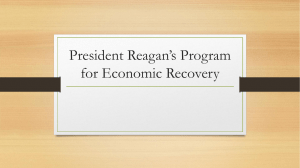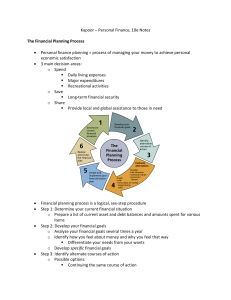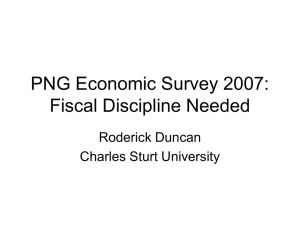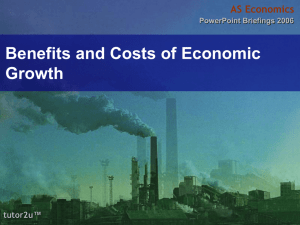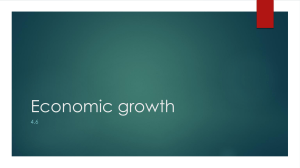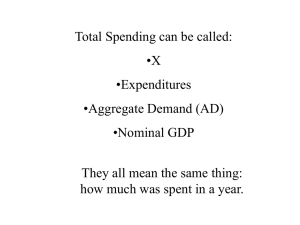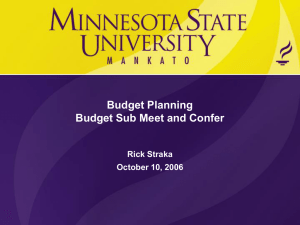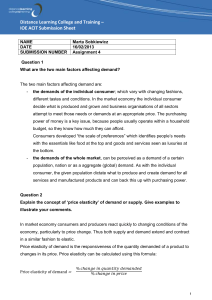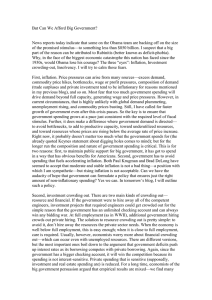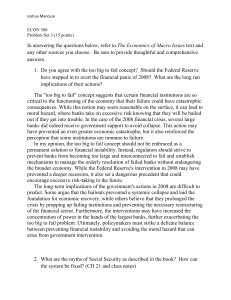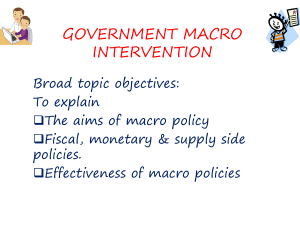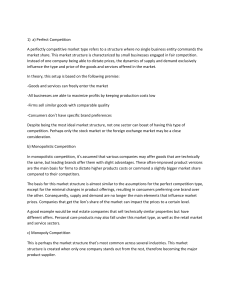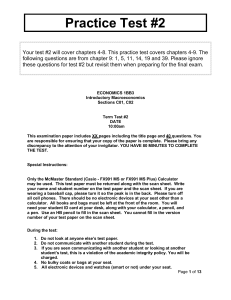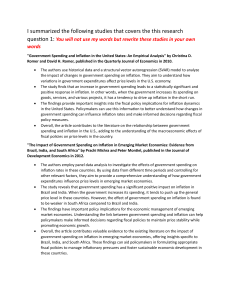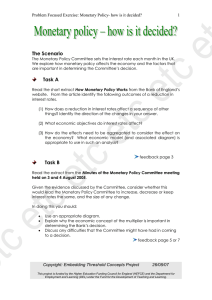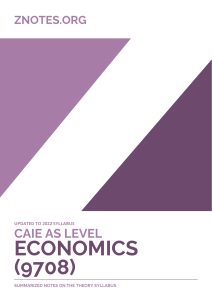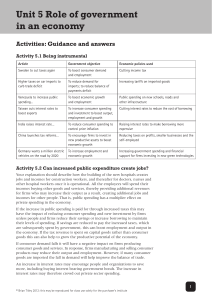Name:_________________________ Block:_______Date:______________ Economics
advertisement
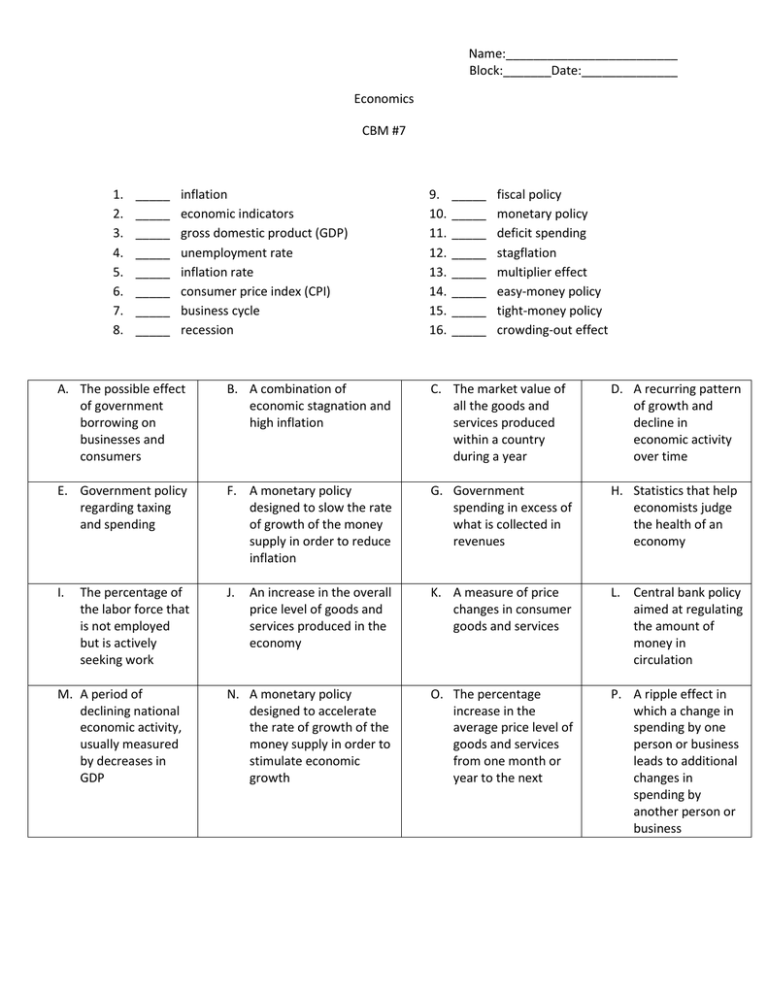
Name:_________________________ Block:_______Date:______________ Economics CBM #7 1. 2. 3. 4. 5. 6. 7. 8. _____ _____ _____ _____ _____ _____ _____ _____ inflation economic indicators gross domestic product (GDP) unemployment rate inflation rate consumer price index (CPI) business cycle recession 9. 10. 11. 12. 13. 14. 15. 16. _____ _____ _____ _____ _____ _____ _____ _____ fiscal policy monetary policy deficit spending stagflation multiplier effect easy-money policy tight-money policy crowding-out effect A. The possible effect of government borrowing on businesses and consumers B. A combination of economic stagnation and high inflation C. The market value of all the goods and services produced within a country during a year D. A recurring pattern of growth and decline in economic activity over time E. Government policy regarding taxing and spending F. A monetary policy designed to slow the rate of growth of the money supply in order to reduce inflation G. Government spending in excess of what is collected in revenues H. Statistics that help economists judge the health of an economy I. J. An increase in the overall price level of goods and services produced in the economy K. A measure of price changes in consumer goods and services L. Central bank policy aimed at regulating the amount of money in circulation N. A monetary policy designed to accelerate the rate of growth of the money supply in order to stimulate economic growth O. The percentage increase in the average price level of goods and services from one month or year to the next P. A ripple effect in which a change in spending by one person or business leads to additional changes in spending by another person or business The percentage of the labor force that is not employed but is actively seeking work M. A period of declining national economic activity, usually measured by decreases in GDP

